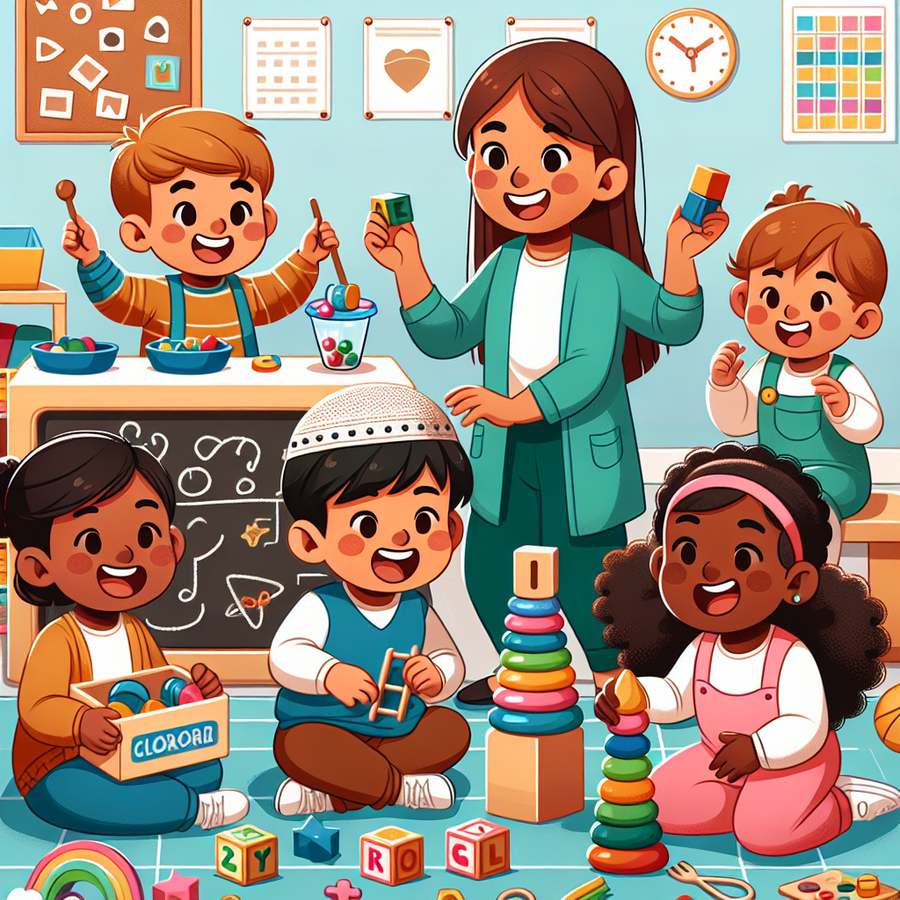Play-based learning strategies for early childhood are not just about fun and games; they are a fundamental approach to foster educational and developmental growth in young children. This methodology supports the natural way children learn through play, promoting creativity, exploration, and critical thinking skills essential for their future success.
Understanding Play-Based Learning
At its core, play-based learning leverages the instinctual need of children to interact with their environment through play. This approach, endorsed by numerous educational theories and practices, emphasizes the importance of guiding children through play activities that stimulate their cognitive, social, emotional, and physical development. By integrating play-based learning strategies into early childhood education, we can create enriching experiences that nurture a child’s curiosity and enthusiasm for learning.
Research consistently demonstrates the effectiveness of play-based learning in promoting better learning outcomes compared to more traditional, structured approaches. It encourages children to explore, discover, and engage with concepts in a manner that is both meaningful and enjoyable for them. For more insights on the impact of play-based learning, the National Association for the Education of Young Children (NAEYC) offers a wealth of resources and research findings.
Play-Based Learning Strategies for Early Childhood
Implementing play-based learning strategies involves careful planning and understanding of the developmental needs of children. It is about creating an environment that encourages exploration and interaction with a wide range of materials. This can include everything from outdoor play that fosters physical development to role-playing games that enhance social and emotional skills.
One effective strategy is incorporating thematic play areas that align with children’s interests and current learning themes. For example, a ‘grocery store’ setup not only supports role-playing and social skills but can also introduce early math concepts through the exchange of goods and ‘money.’ Strategies like these make learning contexts more relatable and understandable for young children, thereby enhancing their engagement and retention of new ideas. Incorporating tools from the role of sensory play in early childhood development can further enrich these play-based learning environments.
Maximizing the Benefits of Play-Based Learning
To maximize the benefits of play-based learning strategies, it’s crucial to observe and interact with children during their play. This active engagement allows educators and parents to guide experiences that extend learning and introduce new concepts. Questions that provoke thinking, such as ‘What do you think will happen if…?’ or ‘Can you tell me more about this?’, encourage children to reflect on their actions and deepen their understanding.
Beyond the classroom, parents can support play-based learning at home by providing diverse play materials, setting aside time for unstructured play, and being present to engage with their children’s play narratives. Engaging in activities that promote fostering creativity and imagination in toddlers and encouraging exploration and curiosity in infants can significantly contribute to a child’s developmental progress.
In conclusion, play-based learning strategies for early childhood are a powerful approach to education that aligns with the natural learning processes of young children. By understanding and implementing these strategies effectively, we can provide a foundation for lifelong learning that is both enjoyable and impactful. For further reading on related topics, explore our comprehensive guide on play-based learning strategies and the importance of choosing toys to support developmental milestones at various stages.













